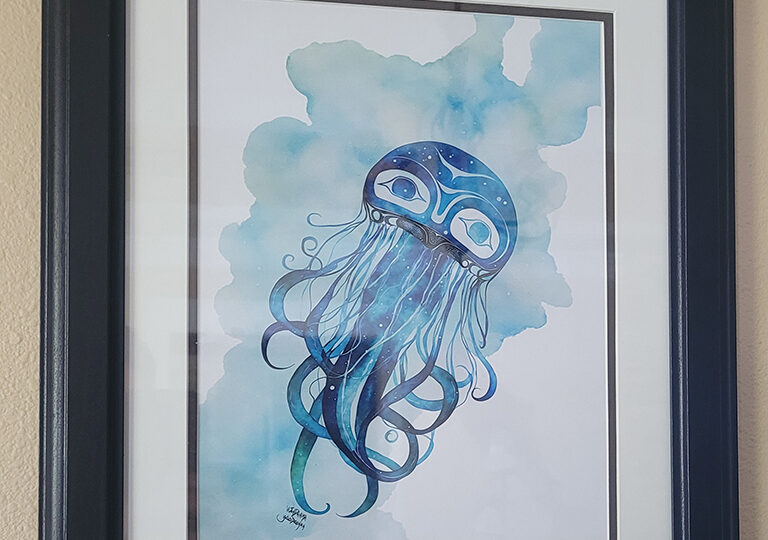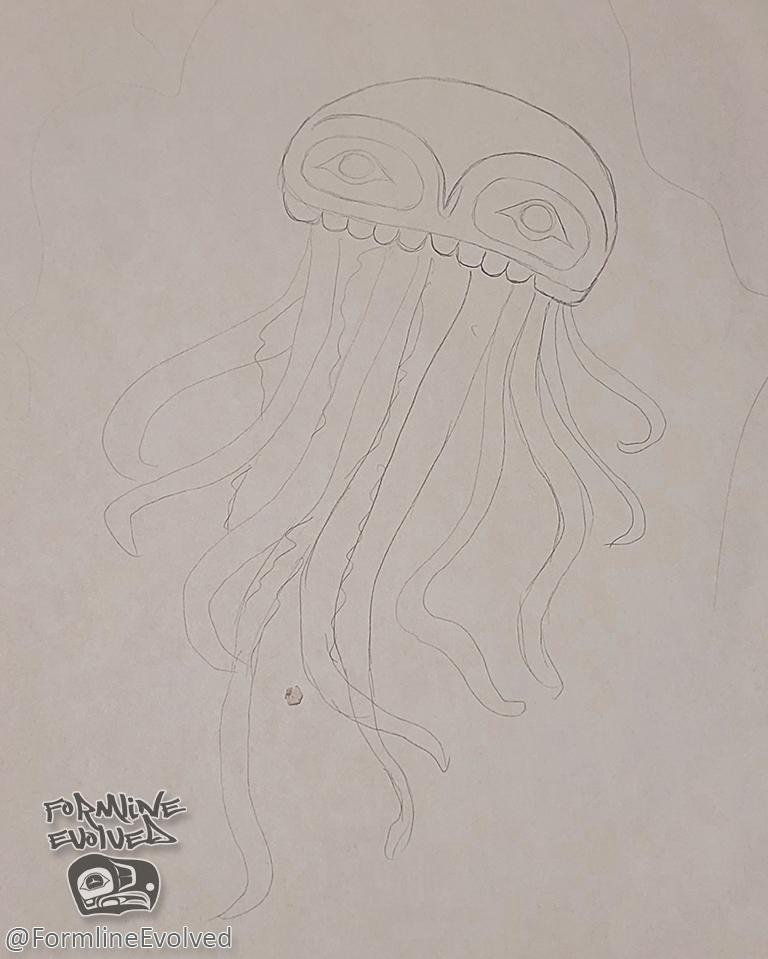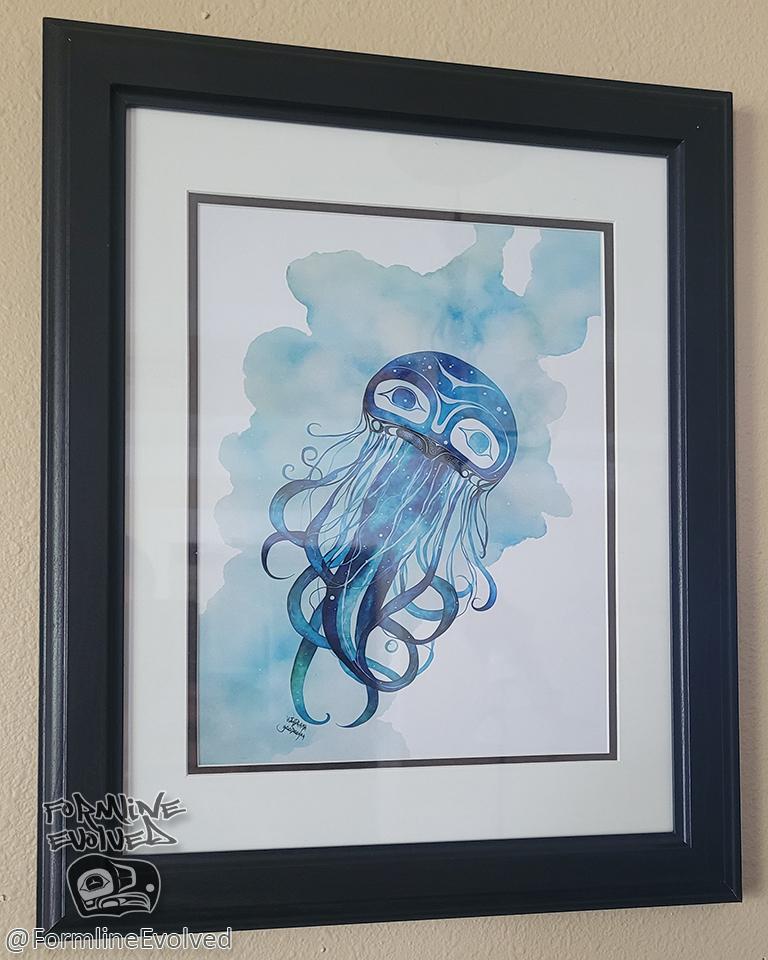
The Jellyfish Story: A Tlingit Watercolor for My Child’s Nursery
Introduction
Welcome to the first piece in my series of Tlingit watercolor formline prints. This series was inspired by a very special project: decorating my child’s nursery. The jellyfish art print combines the serene beauty of marine life with the intricate patterns of Tlingit art, creating a piece that is both calming and culturally rich.
Inspiration and Concept
The jellyfish, with its graceful movements and ethereal presence, has always fascinated me. I remember countless summer days growing up where my siblings and I would be out swimming in our local cove, surrounded by jellyfish. These clear jellyfish, which didn’t sting, became a source of endless fascination. We spent hours canoeing and playing with them, closely observing the patterns on their bells and the circles visible through their translucent bodies. I wanted something fun and relaxing for my child’s nursery, but every piece of art I found was too generic. I felt the need to create my own piece for this project, utilizing my cultural heritage. The jellyfish symbolizes rolling with the waves and adaptability, qualities that I hope to instill in my child. This art print was inspired by the delicate balance of nature and the timeless beauty of traditional Tlingit designs, making it a perfect addition to a nursery. I also wanted to integrate an element of cosmic or stellar depth to convey the infinite possible futures a jellyfish could find itself in.
Design and Process
The art print features a stylized jellyfish adorned with Tlingit patterns on its bell, reminiscent of traditional formline design elements. The color palette of blues and greens creates a serene, aquatic atmosphere, capturing the essence of the underwater world. I began with loose sketches on paper, then brought them into the computer using Photoshop and Fresco. I carefully incorporated traditional motifs to ensure cultural connection. Using a watercolor style, I brought depth and vibrancy to the print, making the jellyfish appear as if it’s floating gracefully through the water while still capturing its graceful movement.

Challenges and Solutions
One of the main challenges was blending the fluidity of the jellyfish with the structured patterns of Tlingit art. This required a careful balance of traditional and modern elements. I decided to limit the formline components to just the bell of the jellyfish and keep the tentacles organic. Additionally, working with watercolor effects presented its own set of challenges, but with a bit of experimentation, I was able to achieve the desired effect. Using reference layers to mask out the stars, I was able to get fairly clean-looking omissions of paint in Fresco. I used a combination of live brushes to get that dynamic paint feel along with a few custom brushes.
Cultural Context
While the jellyfish may not have specific cultural significance in Tlingit culture, the use of traditional formline designs is a way to celebrate and preserve our cultural heritage. The jellyfish has two primary ovoids for the eyes and eye socket with a u-form between, and the brows are collided into one form. By incorporating these traditional designs into a modern art print, I aim to create a piece that is meaningful and beautiful for my child’s nursery.

Story and Interpretation
This art print tells the story of the jellyfish’s journey through the ocean, embodying the qualities of fluidity and grace. The intricate patterns on the jellyfish’s bell represent the interconnectedness of all life, a theme that is central to Tlingit culture. This piece is a reminder of the beauty and wisdom found in nature, and the importance of passing these values on to the next generation. It is also important to note that jellyfish are often seen as slow creatures, commonly found simply afloat and at the whims of the sea. This aspect of their nature adds to the calming and serene quality of the piece.
Future Projects
Looking ahead, I plan to continue this series of Tlingit watercolor formline prints, exploring other marine creatures and natural elements. Each piece will be designed to bring a sense of calm and cultural richness to any space. I am excited to talk more about other pieces I created for my child’s bedroom in the future. I also want to continue exploring what the live painting features are capable of, pushing the boundaries of traditional and contemporary art forms.
Conclusion
The Jellyfish art print is more than just a piece of decor; it is a celebration of the delicate balance of nature and the timeless beauty of Tlingit designs. I invite you to explore this watercolor series and consider how these pieces can bring serenity and cultural heritage into your own home. I hope you and your friends enjoy the colors, the movement, and the blending of traditional formline with the contemporary art form of watercolor.
